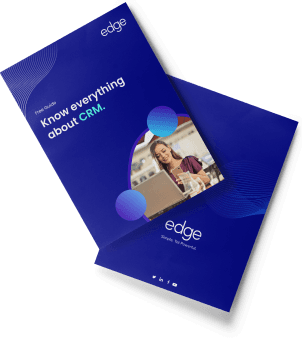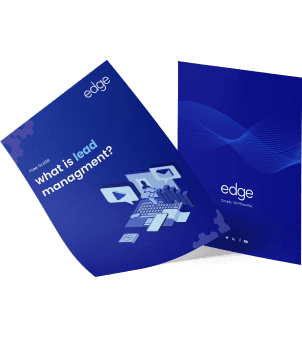Are you familiar with the new buzzword in the sales industry titled “BHAG”? Nope. No worries.
Here’s a quick definition of what the term means and (importantly) how it is pronounced. BHAG, pronounced as “bee hag”, is an acronym for Big Hairy Audacious Goal, is meant to excite and energize employees in a way that quarterly targets and lengthy mission statements often fail to.
A BHAG is a huge, long-term goal that energizes a business and focuses its people on a common cause, and leading them through a process of transformation.
The term was originally coined by Jim Collins and Jerry Porras in their book Built to Last: Successful Habits of Visionary Companies, first published in 1994. As per Collins, “The power of the BHAG is that it gets you out of thinking too small. A great BHAG changes the time frame and simultaneously creates a sense of urgency. ”
A great BHAG is as the name suggests:
- (B)ig—It’s so big that it's not something that your organization can accomplish in a year, or three years, or five. It takes a minimum of ten years to accomplish something this ambitious.
- (H)airy—The idea seems wild and crazy because it’s so forward-looking and so out of the box. It’s something you’ve never done before.
- (A)udacious—It should have a gasp factor that makes you sit up and listen when you first think about or hear it. The next emotion should be that it’s exactly the right idea for your company to pour its heart and soul into.
- (G)oal—The BHAG must have a clearly articulated goal (or goals) connected to the company’s strategy, which can be measured so that success can be defined and celebrated.
Key attributes of an effective Big Hairy Audacious Goal are:
- Inspiring – motivates everyone in the company
- Be just possible – not easy. Could be achieved if the entire organization operates at the top of its game. The BHAG must be set with a realistic understanding of what the company can achieve – if it is set with bravado, it is more likely to demotivate
- Fit with company strategy, purpose, and values
- Consistent – the BHAG will have no credibility if the business changes it every few years. A BHAG that is big enough to inspire will take a decade of extraordinary effort to deliver
- Shared – not just created by the CEO but owned and shared broadly across the company
BHAG aka “bee hag” is broadly categorized into 4 types:
- Role model—Here, you would emulate the traits of another well-known and highly successful company. For example, you might aim to become the Uber or Nike of your industry.
- Common enemy—This is the intention to overcome the top companies in your industry to become the leader yourself.
- Targeting—This type of BHAG is about setting a clearly defined quantitative or qualitative goal, such as becoming a billion-dollar company or No. 1 in industry.
- Internal transformation—This category is usually best for a large, established company seeking to overhaul systems, processes, or positioning. What makes a good BHAG?
How to create your own BHAG?
Creating your own BHAG requires some soul-searching. The first question to ask is what your organization is passionate about. For the organization members to fully embrace a BHAG, it needs to speak to their hearts and minds.
Also, ask what you have the potential of doing better than anyone else in your field. You’re not the best in the world at this yet, but you could get there someday. It’s important to aim high, or it’s not worth the long-term commitment.
And then you should look at the one economic factor that would have the greatest impact on your business if improved. Collins asks in his book Good to Great, “If you could pick one and only one ratio—profit per X—to systematically increase over time, what X would have the greatest and most sustainable impact on your economic engine?”
Keep in mind that the BHAG must be:
- Compelling and exciting
- Action-oriented
- Innovative
- A ten-year plan at a minimum
As you contemplate this process, you’ll need to create a vision of what your company will look like once it has achieved its BHAG many years down the road. Define your BHAG goals so that they’re clear. Clarity is important for creating a realistic roadmap and helping you outline concrete measures for what success looks like.
How to know if your BHAG strategy is working for your business?
Because a BHAG requires such a substantial resource commitment, it’s important to ask certain questions to ensure you’re on the right path with your BHAG goals. Your questions might include:
- Is the BHAG realistic?
- Does it connect to my business?
- Does it create forward progress?
- Are my team members ready to throw their creative energy and commitment into it?
- What will my business look like with and without it?
- What would need to happen to make it a reality?
- What obstacles stand in the way of completing the BHAG?
- How would I overcome these obstacles?
- What does success look like, and how do I measure it?
If you ask the right questions of a BHAG and see your plan through to fruition, the eventual payoff could be the most transformative thing to ever happen to your company—until you set your next BHAG, that is.
When is it useful?
It can be a very powerful way to communicate a clear direction and level of ambition that aligns with the entire organization. The management team must be committed to the BHAG, or it will not only have any power, but it will also reduce credibility. Don’t force BHAG strategy artificially.
We hope this article will be helpful in creating the perfect BHAG strategy for your organization. If you have any questions/queries about BHAG, feel free to drop in your questions on our social media.













